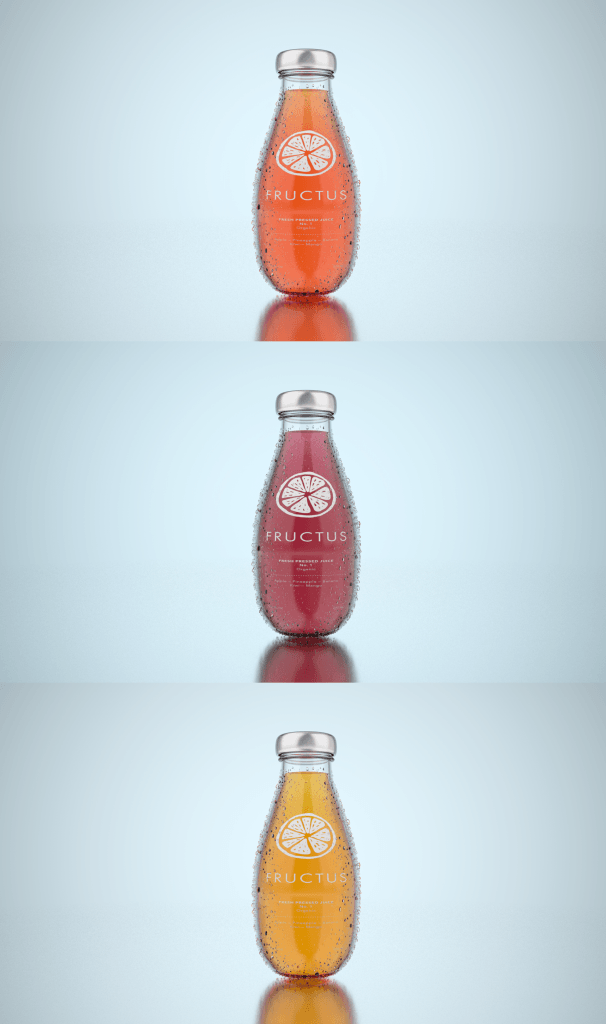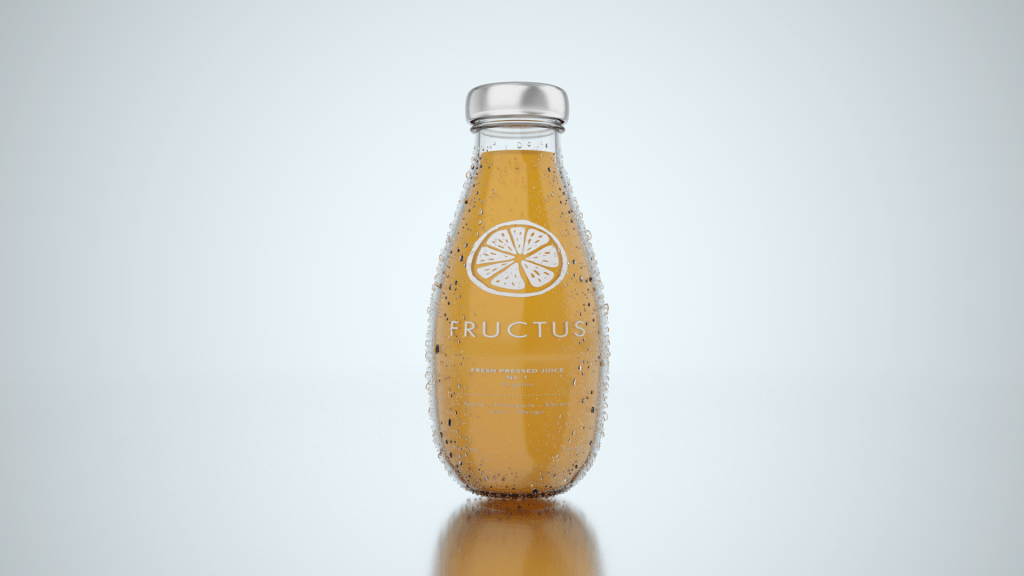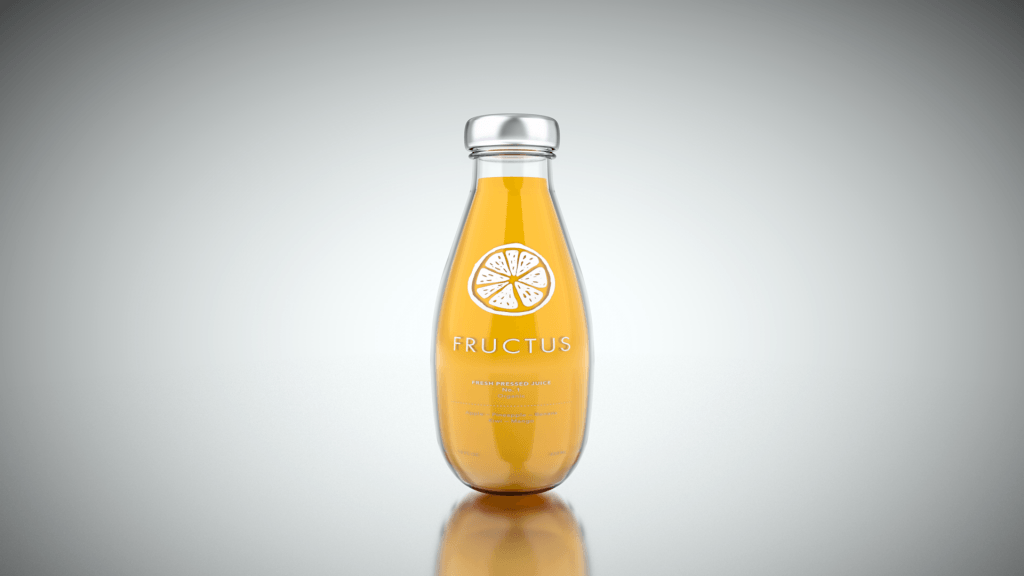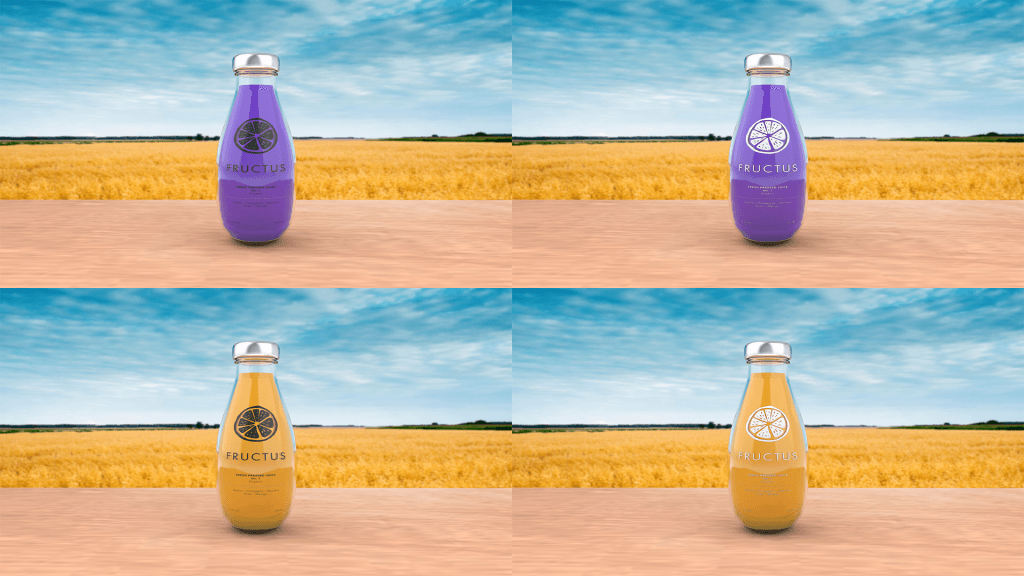Using the pre-existing fluid object which I had created previously, I started to experiment with the Transparency and Reflection channels within c4d’s material editor in order to create a more realistic material for the product. When I started I didn’t know what ‘flavours’ or coloured materials I was going to create, I simply started to create something that looked real in order to achieve photorealism. Because the initial colour of the object was orange, I started with that – I disabled the colour and reflection channels and enabled the transparency, and using the water present within this I was able to create an orange looking material. After this, I then enabled the water present in the reflection channel which produced a good effect, however, it probably wasn’t necessary as the glass texture on the outside of the bottle created the main dominant reflections.
After these steps, there was a long period of fine-tuning – the colour specified within the transparency had a lot of strength to it, with the smallest amount of colour (controlled by the saturation slider) it had a drastic effect when rendered out, this colour strength change varied depending on how much material was behind it. After this process, I finally managed to get 3 material to a high realistic quality and rendered them out, these can be seen below.
Final:
These are the final fluid materials that I had created, going in chronological order I had tried to create a Blood Orange, a Mixed Fruit and an Orange flavour. I feel that they look fairly realistic and this was achieved through experimenting with the transparency and reflection channels within c4d’s material editor, I was further able to fine tune this material through playing with the absorption distance to create a material that increased in transparency where thin – this is particularly evident in the top render where the main body of the fluid is a pink colour, however, towards the neck of the bottle where it gets thinner it becomes more orange.
Whats Next?
Next, I am going to post these to social media to get a response as to whole realistic these materials are, and also how much the audience like them. This will then further allow me to make changes based on this feedback.



